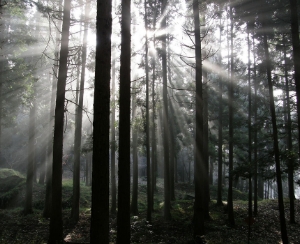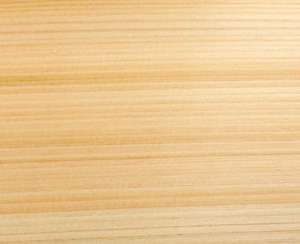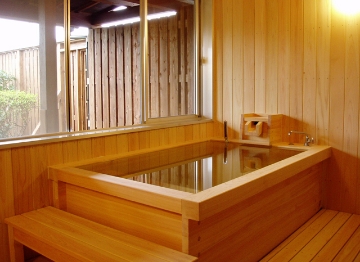Hinoki
Chamaecyparis obtusaSoftwood, conifer
Family: Cupressaceae
Hinoki, as much as Sugi, is a representative tree species in Japan. Hinoki is durable and has a characteristic fragrance. It has second largest plantation areas next to Sugi, and is widely used as high-grade lumber. "Nihon Shoki" which is the Japan's first authoritative history says "build a boat with Sugi or camphor tree, build a palace with Hinoki and make a coffin with podocarpus". Hinoki has long been known to be the perfect and best material for palace construction. As for the name of Hinoki, taking the " sun" which represents the highest precious thing, there is the theory "Sun's tree".


FEATURES
"The color of the heartwood is pink and the sapwood is almost white. Along with its characteristic fragrance, it has a sense of cleanliness and is highly durable. Durability of the heartwood is particularly high, and it withstands water moisture for a long time. The dry specific gravity ranges from 0.30 to 0.45, (0.38 in average). The annual ring is not very clear, as the change of the cell shape in one year is small. Therefore, Hinoki is a homogeneous and dense species, and its surface would be beautiful and glossy if finishing is made well. The name,of Hinoki is also said to be derived from ""fire tree"" connoting that it was used for fire-making. It is said that Hinoki is hard to cause deviation as a material because it can dry so well deep inside that it can make fire."
USAGE
Because of its excellent properties, Hinoki is used for many purposes as a high grade material. When you call a house of Hinoki , it is used as a synonym for a high class house. Hinoki is imperative for building temples, shrines and palaces. Also known are fittings, sculptures (such as Buddhist statues) wooden shapes, curves, troughs, separators for storage batteries, and so on. "Hinoki bath" is a way of utilizing the durability of Hinoki

Charactristic Table
| Specific gravity in air-dry |
Mean comefficient shrinkage for 1% change of moisture content(%) |
Surength(Mpa) | Modulus of elastcity in bending(GPa) |
|||
|---|---|---|---|---|---|---|
| Radial direction | Tangential direction | Bending surenght | Longitudinal compressive Surenght |
Shear strength parallel to grain |
||
| 0.44 | 0.12 | 0.23 | 74 | 39 | 7.4 | 8.8 |


